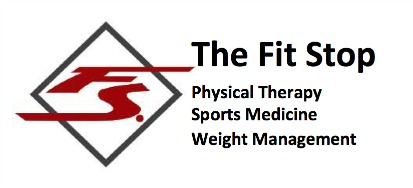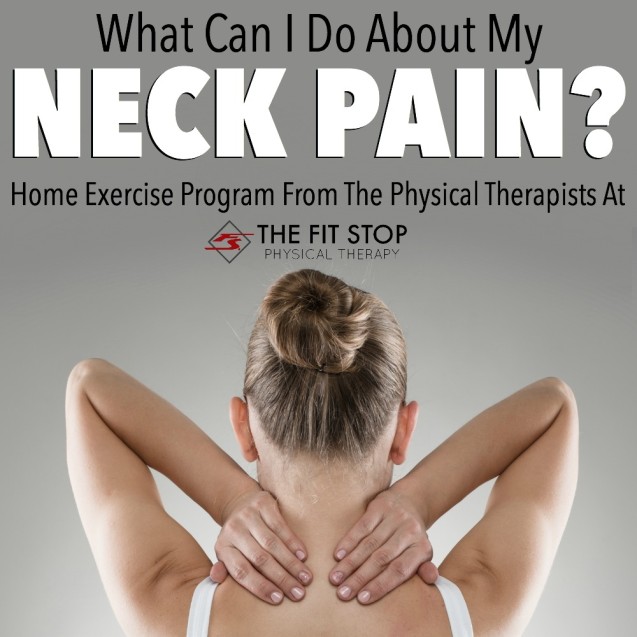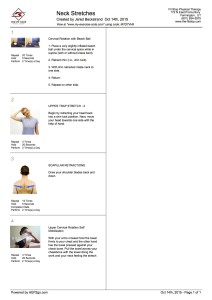Physical therapy for neck pain
What a pain in the neck!
At some point in life, your neck will likely cause you pain. Neck pain is right up there with pain related to the low back as far as how common it is. According to some sources, the burden placed on the economy because of neck pain, is second only to low back pain. In fact as many as 54% of individuals have experienced some neck pain in the past 6 months. Once this neck pain comes, it is very likely to stay for a long time and to come back again after it has initially resolved. So you can see that neck pain truly is a pain in the neck for a lot of people (including myself). My job as a physical therapist is a physically active job, requiring physical exertion at times that puts a bit of stress on my upper back and neck. By the end of my work week, I go home with a pretty tired, and sometimes outright painful neck. So what is the deal? What is typically causing our neck pain and why is it so common after all?
What Causes it?
To begin with, it is important to note that, just as with our lower backs, not all pain in the neck is not created equally. There are multiple structures in the neck area that can be responsible for causing your neck pain, so it is important to try and hone in on the affected tissue. For the purposes of my post today, I would like to focus primarily on the kind of neck pain that is typically referred to as “mechanical neck pain”. Mechanical neck pain refers to pain that originates in the joints of the spine itself. Our spine is connectected by small joints called facet joints. These joints can get stressed and sore from the daily grind of life, from an overly intense workout, or sometimes without any warning at all. As a result, the surrounding muscle tissue can go into spasm and contribute to the pain as well. Common qualities of this kind of neck pain include the following symptoms:
● pain located centrally in the neck and does not radiate (shoot down one arm)
● recent onset of pain, sometimes without any real explanation. A lot of times, people simply just wake up with this kind of neck pain, having slept all night in the “wrong” position
● pain that increases with neck movement
● a significant loss in neck movement, usually isolated to one side. For example, difficulty turning head to the left, but not so much to the right. It can just feel like it is stuck.
Why is it so common?
To begin with, the cervical spine makes up the top 7 (C1-C7) vertebrae of our spine. The spine serves as a foundation point for most movement that we make throughout our day. As a result the spine serves as an important part of the “core” that we hear about so often in the health and fitness world. Having a strong “core” is very important to maintaining good musculoskeletal health, and the cervical spine or neck plays just as important of a role as the other parts of our core. So, because the neck is essentially the core for movements related to the upper quarter of our body (from the shoulder blades on up), heavy pushing and pulling activities performed with our arms can put stress on the neck and over time cause pain. Another common contributor to that nasty pain in the neck is the all-too-common desk job with its accompanying poor posture. Having improper posture in a seated position puts the head in a nasty position for gravity to do its work on the spine. It is said that our head weighs as much as an average-sized bowling ball. Imagine the weight of a bowling ball being held out away from your body throughout most of the day, and the fatigue that will certainly set in. This is in essence what the muscles and joints of the neck have to do throughout the day if posture is poor while we sit.
What do we do about mechanical neck pain?
Keep in mind the old adage from Benjamin Franklin, “An ounce of prevention is worth a pound of cure”. Most of these nagging neck pains can be avoided altogether by watching our posture throughout the day and making sure our postural muscles have good strength and endurance. Maintaining good flexibility throughout our neck and upper back is also important through a regular stretching routine.
In the early stages of neck pain, it is important to keep the neck moving. It will actually slow your recovery if you over protect your neck and don’t move it enough. Recovery will speed up with early gentle movement exercises. See the following home exercise program for your neck pain.
As always, we use the website hep2go.com to generate all of our home exercise programs for our patients.
Click on the image below to open up a PDF in a new browser tab/window.
If you do have neck pain or any questions about pain related to the neck and upper shoulders please don’t hesitate to call us! We would love to hear from you and answer whatever questions you may have!
Give us a call at one of our 4 clinics (click the links below for the phone numbers)…
Toby Bluth, PT, DPT
Fit Stop Physical Therapy – Heber City
345 West 600 South Suite 200
Heber City, UT 84032
(435) 654-5607
Disclaimer: The information presented in this post is designed to be used for informational purposes only. The diagnoses and treatment plans outlined are extremely generalized and may or may not be the recommended interventions for your specific problem. If you are experiencing pain, you are encouraged to consult a healthcare provider to determine the best treatment plan that will be in your individual best interest. Fit Stop Physical Therapy claims exemption from accident, injury, or perpetuation of any injury incurred while performing exercises found on this website. The user assumes all risk… and reward!!



